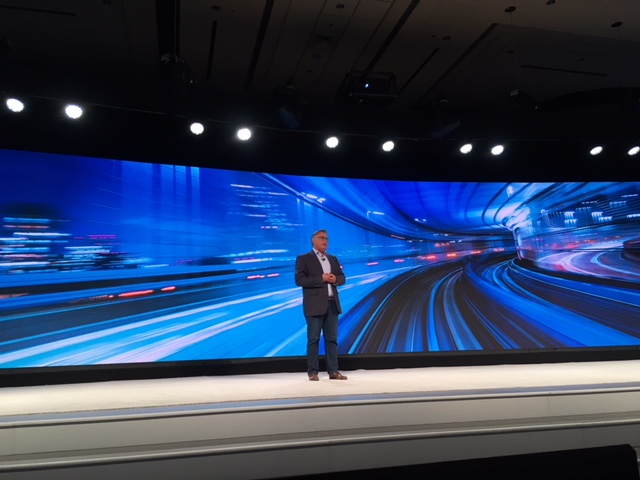HP Inc. may have sent a zero-G printer to the International Space Station, but its next move is staying a little closer to home.
The company is now targeting the manufacturing sector, showcasing new large-scale customer deployments of 3D printing at the Additive Manufacturing Users Group (AMUG) conference in St. Louis on Apr. 9.

Dion Weisler, HP president and CEO, used his keynote at HP’s Executive Forum in Las Vegas on Apr. 11 to speak about how manufacturing is a $12 trillion industry that can be revolutionized by 3D printing. The production of functional parts, including functional prototyping, is an important use-case for 3D printing and the demand for production-grade parts is expected to continue to grow exponentially over the next few years.
“Every conversation I have with executives somehow turns to digital manufacturing and how companies can stay relevant in the fourth industrial revolution that we’re in,” Weisler explains to a crowd of approximately 400 HP partners and executives. “The 3D printing business is in a very exciting time, but it only makes sense to 3D print parts if it’s faster, cheaper, and more efficient than traditional analog manufacturing. But that’s increasingly becoming the case and we’re seeing huge growth.”
HP is the largest plastic production 3D printer company globally and Weisler encourages manufacturers to “accelerate their journey to full-scale 3D production” to keep up with the changing global economy.
3D printers can reduce design time by more than 50 per cent and save millions of dollars in deferred tooling expenses. The materials 3D printers use (plastics) can also lead to as much as a 90 per cent reduction in weight, 95 per cent reduction in cost, and more than 30x reduction in carbon footprint.
HP’s most popular 3D printer is the Multi Jet Fusion 3D, which produced more than three million parts in the last year alone.
Weisler says that manufacturers are seeing its relevance given that just like phone apps, 3D printers can be easily updated at any time and can be sent new parts designs whenever they are devised. The industry will also increase the personalization of products and parts.
“We’re going to see mass personalization because of 3D printing, and there will be less waste from both a capital and a materials perspective. It’s reshaping and disrupting for all the right reasons. We can lead the way to a better industrial and sustainable future,” he concludes.





